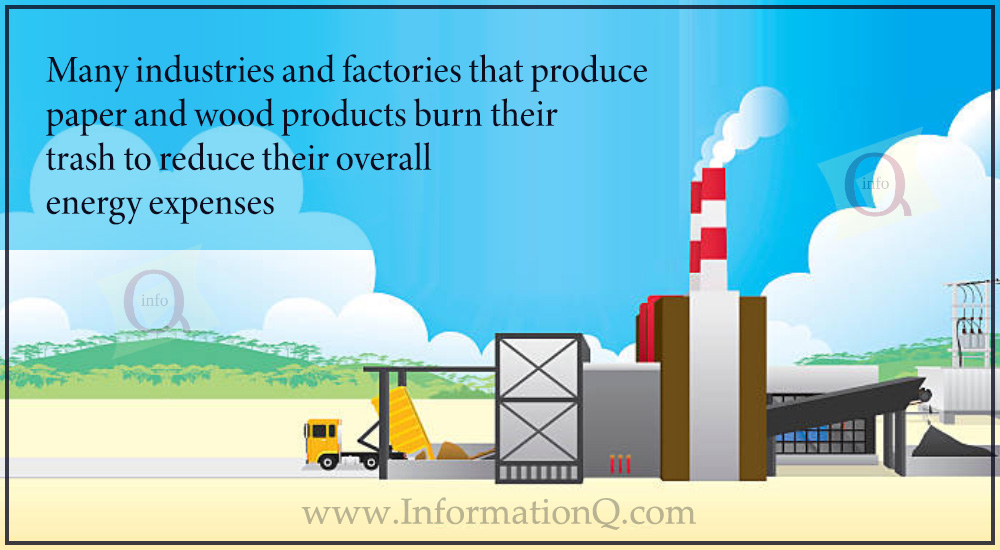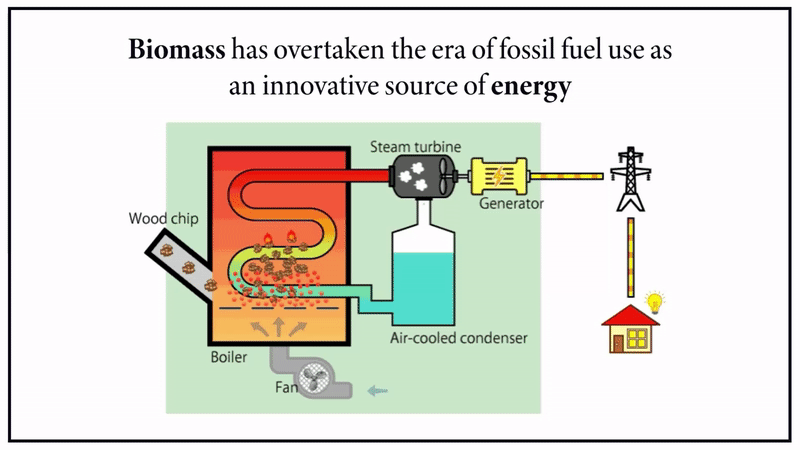Energy sources from biomass and what can be done with them.
Biomass energy, commonly referred to as bioenergy, is the energy extracted or obtained from plants and their residual components. Biomass energy has existed since the dawn of time, when stone-age humans burned wood to provide fuel for cooking and keep warm in the cold. Every organic substance has the ability to conduct biomass energy. Wood is still recognized as the main source of biomass energy in today’s world.

To generate sustainable energy, a reusable organic energy supply derived from natural materials is used. Bioenergy can be found in many different forms, such as crop waste, waste residues, wood debris, and algae. Biomass energy comes in a various forms. The energy stored in these materials is converted into useful biomass energy. Let us identify the various types of biomass energy sources accessible and the advantages of utilizing them for a more sustainable future.
We use four major types of biomass energy these days, which include
Wood and Agricultural Products
As we all know, humanity has been using wood as a source of energy for a long time. Logs, chips, bark, trunks, broken branches, leaves, and other types of wood can be found. Not only wood, but also residue from agricultural wastes such as fruit pits, corncobs, and any other form of crop residues are used to generate bioenergy.



Many industries and factories that produce paper and wood products burn their trash to reduce their overall energy expenses. Furthermore, several power plants generate electricity for their daily business operations using biomass energy. To reduce sulfur dioxide emissions in the environment, some companies and manufacturers add wood and various types of wood to their coal fuel.
Solid Waste
The new approach to converting trash to energy is to turn garbage into usable forms of energy, and there are various firms that perform this task. Before being burned, all dangerous and harmful materials are separated from junk debris, and the usable trash is turned into energy or power. This demonstrates how valuable and unique our natural environment is. It will recycle the garbage and turn it into something valuable. The solid waste conversion to energy will help with
- Reduction in the emission of greenhouse gases
- Sustainable and eco-friendly source of energy
- Metal recovery with the help of recycling waste
The burning of solid waste also helps to reduce the amount of rubbish that ends up in landfills, as well as the costs associated with proper waste disposal.
Landfill Gas and Biogas
Landfill gas is the result of the decomposition of organic materials and garbage in landfills. This gas, which is commonly referred to as LFG, is collected from the landfills with the help of boilers on the site itself or from any type of combustion system. As a result of this waste degradation, methane gas is created, which is the most abundant component of natural gas.
Not only is methane gas present, but so is carbon dioxide, a trace of oxygen and nitrogen, and the vast majority of methane gas. It is critical to remove these gases, particularly methane, from the waste as they pose a significant risk of explosion. A vented or burned pipe system is used to remove such gases from landfills while being environmentally beneficial.
Read also this
About the Solar Energy
Read more: What is Geothermal Energy?
Read more: Renewable Energy Sources’
Alcohol Fuels
Ethanol and biodiesel are the two most commonly known and popular types of alcohol fuel. By fermenting and later distilling the sugar and starch found in plants, especially in corn and crop residue, ethanol is produced. It can be easily produced from any organic substance that contains sugar, cellulose, or starch. On the other hand, biodiesel is produced by chemically reacting alcohol with greases, animal fats, often soybean oil or even vegetable oils.
Ethanol’s sustainable energy supply not only replaces gasoline supplies, but it also aids in more efficient fuel combustion, keeping the air around us cleaner and pollution-free. Biodiesel, on the other hand, is combined with petroleum to produce B2, B5, or B10 diesel.



The long-term Advantages of Using Bioenergy
Biomass has overtaken the era of fossil fuel use as an innovative source of energy.
- The use of biomass as a source of energy is both environmentally sound and economically beneficial. Bioenergy emits CO2 while also consuming it in order to grow.
- The most significant benefit and positive attribute of biomass energy is that it converts waste into a usable source of energy. Waste and rubbish from landfills are transformed into a useful energy source.
- Bioenergy’s chemical emissions are not dangerous or damaging to the environment. As a result, it is regarded as the best renewable resource in all of its natural forms.
- Because of its versatility, bioenergy is not hazardous to the environment, as different types of biomass provide different types of energy that may be used in a variety of ways.
- It is critical to maintain our mother earth’s happiness and make it a better place to live. It is imperative to use the greatest alternative energy resources and to be aware about them in order to preserve our tomorrow sustainable and eco-friendly.
Leave a Reply